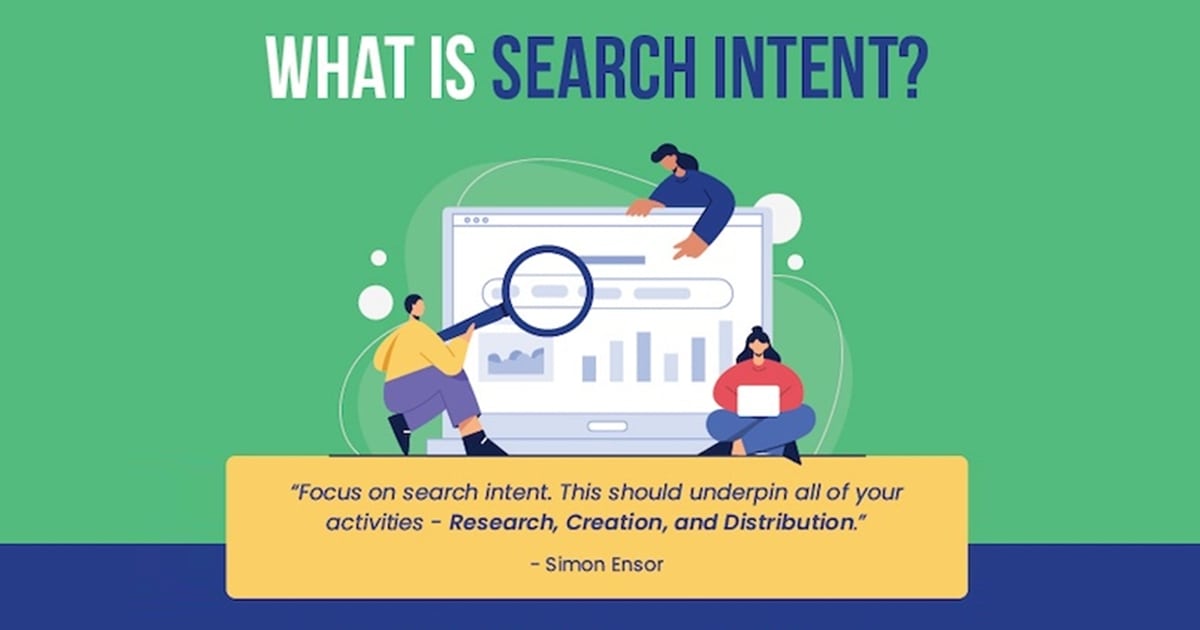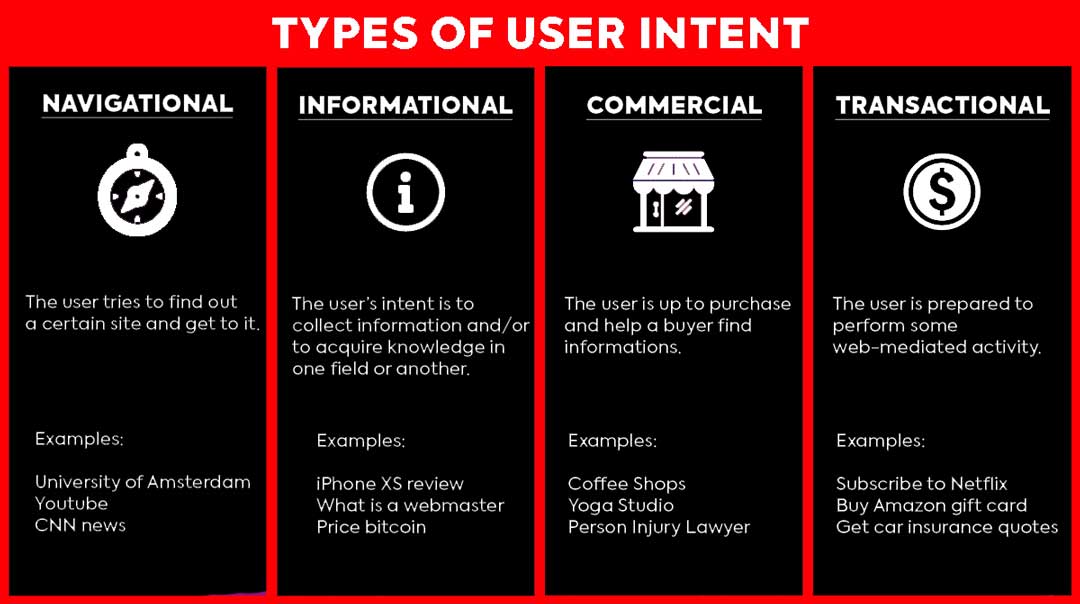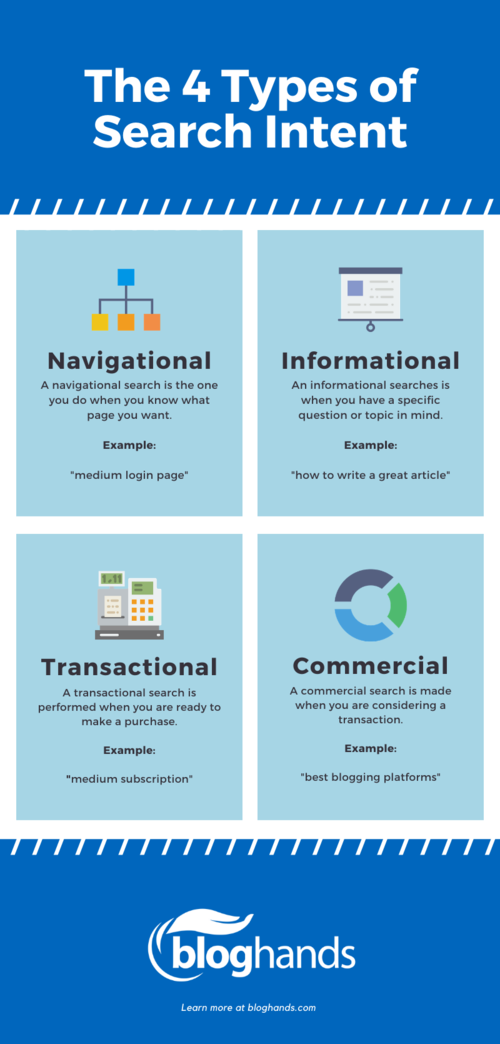Unlock the mystery of search intent: learn how understanding user motivation can take your SEO strategy to the next level.

Image courtesy of via DALL-E 3
Table of Contents
Introduction: Understanding Search Intent
When we search for something online, have you ever wondered why the results we get are so accurate and relevant to what we’re looking for? That’s where the concept of search intent comes into play. Search intent is all about understanding the meaning behind people’s online searches.
What is Search Intent?
Search intent is like a secret code that helps search engines figure out what exactly you are looking for when you type a query into the search bar. It’s about deciphering what people truly desire or need when they turn to the internet for answers.
Why Does Search Intent Matter?
Understanding search intent is crucial because it helps search engines provide the most relevant results to users. By knowing what people are searching for, it becomes easier to match their needs with the right information. This not only improves search results but also makes it simpler for us to find exactly what we’re looking for.
Types of Search Intent
When you search for something online, you have a specific goal in mind. This goal is known as search intent, and it can be categorized into different types based on what you are looking for. Let’s explore the various types of search intent:
Informational Intent
Informational intent is when you search for something to find answers or learn new things. For example, if you type “how to bake a cake” into a search engine, you have informational intent because you want to acquire knowledge about baking.
Navigational Intent
Navigational intent is when you are looking for a specific website or page. If you type in the name of a website like “YouTube” into a search engine, you have navigational intent because you are seeking to navigate to that particular site.
Transactional Intent
Transactional intent occurs when you are ready to make a purchase or complete a transaction online. Searching for “buy red sneakers” indicates transactional intent as you are looking to make a purchase.
Commercial Investigation
Commercial investigation intent is when you research and compare products or services before making a decision. For instance, if you search for “best smartphones 2022,” you have commercial investigation intent as you are exploring your options before buying.
How Search Engines Understand Intent
Search engines like Google use complex algorithms to understand what people want when they type something into the search bar. These algorithms work like detectives, trying to figure out the intent behind each search to give the most relevant results.

Image courtesy of www.marketingprofs.com via Google Images
Algorithms and User Signals
Algorithms are sets of rules that help search engines analyze and interpret user queries. They consider various factors like the words used, the context of the search, and even the user’s location and browsing history. Additionally, search engines gather data from user behavior, such as which links are clicked and how long users stay on a page, to refine their understanding of intent.
Analyzing Keywords and Phrases
When you search for something on the internet, search engines look closely at the keywords and phrases you use. By analyzing these terms, search engines try to uncover the meaning behind your search. For example, if you type “best pizza near me,” the search engine understands that you’re looking for pizza places in your vicinity.
Optimizing Content for Search Intent
When it comes to creating content for the internet, a crucial step is understanding what people are actually looking for. This is known as search intent. By researching user intent, content creators can tailor their articles, videos, or websites to better meet the needs of their audience.
Creating Relevant Content
To optimize content for search intent, it’s important to make sure that the information provided is relevant and useful to the user. This means using clear headings, organizing the content in a logical manner, and presenting the information in an easy-to-read format.
Common Mistakes to Avoid
When it comes to creating content for your website, one common mistake is ignoring what users are actually searching for. If you don’t take into consideration the search intent of your audience, you might end up with content that doesn’t match their needs. This can result in poor search engine rankings and lower website traffic. To avoid this mistake, always think about what kind of information your target audience is looking for and tailor your content to meet those needs.

Image courtesy of blaksheepcreative.com via Google Images
Overloading with Keywords
Another mistake to avoid is keyword stuffing. This occurs when you try to cram as many keywords into your content as possible in the hopes of boosting your search engine rankings. However, search engines are smart and can detect when keywords are unnaturally placed or used excessively. Not only does keyword stuffing not help your SEO efforts, but it can actually harm your website’s ranking. The key is to use keywords naturally and in a way that makes sense within your content.
Tools to Help Understand Search Intent
When it comes to understanding search intent and optimizing your online content, there are several tools available to assist you in this process. These tools can provide valuable insights into what your audience is searching for and help you tailor your content to meet their needs effectively. Let’s explore some of the most useful tools for understanding search intent:
Google Search Console
Google Search Console is a free tool provided by Google that gives website owners valuable information about how their site is performing in search results. It provides data on search queries, click-through rates, and the position of your website in search results. By analyzing this data, you can gain insights into the intent behind users’ searches and adjust your content accordingly to better match their needs.
Keyword Research Tools
Keyword research tools like SEMrush and Ahrefs are powerful resources that can help you understand what people are searching for online. These tools provide data on search volume, keyword difficulty, and related keywords, allowing you to identify trends and patterns in search behavior. By using keyword research tools, you can discover the language and phrases your target audience uses, helping you create content that aligns with their search intent.
Real-World Examples
Let’s look at an example of a blog that successfully used search intent to enhance its visibility. Imagine a blog that writes about healthy recipes. By focusing on informational intent, this blog created content that answered common questions people have about cooking nutritious meals. When users searched for terms like “easy vegetarian recipes” or “healthy snacks for kids,” this blog’s posts showed up at the top of search results because they provided valuable information that matched what users were looking for. As a result, this blog gained more traffic and followers, showing how understanding search intent can make a big difference in online visibility.

Image courtesy of bloghands.com via Google Images
Case Study 2: E-commerce Site
Now, let’s explore how an e-commerce site leveraged search intent to boost its sales. Consider an online store that sells eco-friendly products. By targeting transactional intent, this e-commerce site optimized its product pages to make it easy for customers to make purchases. When users searched for items like “biodegradable cleaning products” or “sustainable fashion brands,” this site showed up at the top of search results with clear options to buy. By aligning their content and offerings with what customers were ready to purchase, this e-commerce site saw a significant increase in sales and repeat customers, proving that understanding search intent is key to driving online business success.
Conclusion: Mastering Search Intent
Understanding and mastering search intent is crucial for navigating the vast landscape of online searches effectively. By recognizing the different types of search intent and aligning your content with what users are looking for, you can significantly enhance the visibility and relevance of your online presence. Let’s dive into why mastering search intent is essential for successful online search experiences.
The Significance of Search Intent
Search intent forms the backbone of online searches. It helps search engines deliver precise and relevant results that cater to users’ specific needs. By grasping search intent, individuals and businesses can tailor their content to address these needs accurately, improving their chances of ranking higher in search engine results pages and reaching the right audience.
Optimizing for Success
Mastering search intent involves optimizing your content to match the intentions behind users’ searches. Conducting thorough research on user intent, crafting relevant and informative content, and ensuring that your website aligns with different types of search intent are fundamental steps in improving your online visibility and overall user experience.
Empowering Your Online Presence
By honing your understanding of search intent and optimizing your content accordingly, you can empower your online presence to stand out amidst the vast sea of information available on the internet. Through strategic content creation and a deep comprehension of what users are searching for, you can elevate your online visibility, attract the right audience, and ultimately achieve your online goals.
Mastering search intent is an ongoing process that requires dedication, research, and a keen eye for user needs. By prioritizing search intent in your online endeavors, you set yourself up for success in the digital realm, ensuring that your content is not only visible but also valuable and relevant to those seeking information and solutions online.
Want to turn these SEO insights into real results? Seorocket is an all-in-one AI SEO solution that uses the power of AI to analyze your competition and craft high-ranking content.
Seorocket offers a suite of powerful tools, including a Keyword Researcher to find the most profitable keywords, an AI Writer to generate unique and Google-friendly content, and an Automatic Publisher to schedule and publish your content directly to your website. Plus, you’ll get real-time performance tracking so you can see exactly what’s working and make adjustments as needed.
Stop just reading about SEO – take action with Seorocket and skyrocket your search rankings today. Sign up for a free trial and see the difference Seorocket can make for your website!
Frequently Asked Questions (FAQs)
What if I don’t know my search intent?
If you’re not sure what you’re looking for when you type into a search engine, don’t worry! Search engines are smart and try to figure out what you need based on what you type. They look at things like the words you use and what other people have searched for to help show you the right information.
Can search intent change over time?
Yes, search intent can definitely change as people’s needs and interests change. For example, maybe you were looking for information about dinosaurs one day but then later wanted to find a video game to play. Content on the internet can also change to match what people are searching for, so it’s always good to keep exploring to find what you need.







